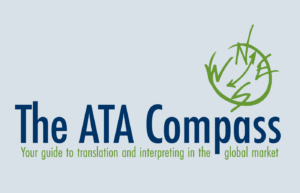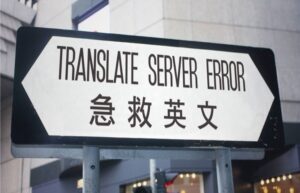Translation as a Tool for Understanding
Legal firm saves on discovery costs by partnering with translation company
We’ve all seen the images on the evening news: federal agents hauling computers and file boxes into the back of a big, white van, to be potentially used as evidence in a lawsuit. Anyone who has worked in a legal firm knows that there will be a small army of people needed to inventory, number and wade through those documents to identify what will be useful if the case goes to trial. This process, known as discovery, can be tedious and costly. But it’s even more complicated when those files are in a foreign language, and the team can’t understand them enough to know whether they have bearing on a case.
A legal firm was faced with exactly this dilemma during discovery for a case where their client suspected embezzlement. Hundreds of boxes of memos and expense reports, nearly all in French, needed to be combed through to determine if funds had been misappropriated. But no one in the Californian firm spoke enough French to even begin to understand what was in the documents.
The legal firm contacted a local translation company that specializes in French. With decades of experience, it didn’t take the owner long to realize that this was a potentially huge project. It would keep just about every French to English translator on her roster busy, and would be very lucrative. But it was clear to both the translation company owner and her attorney client that fully translating all of these documents was not the best use of her resources—translators—nor of the client’s money. And it would lengthen the process considerably.
Making translators a part of the team
So the translation company owner suggested something out of the ordinary. Rather than pulling most of her translators off other projects (potentially leaving her company’s other clients in the lurch) or refusing the project altogether, she sat down with the attorney to determine exactly what they were looking for. Since much of the discovery in these types of cases is done by the law firm’s clerks and interns, it became clear that the translators didn’t need a law degree, they just needed to know what the legal team was looking for. The client was delighted: not only would they save time, but also money.
The translation company set up a method to track the document numbers, and invited its contractors to sign up for times to come into the office to read and summarize the documents. With key terms on a whiteboard in front of them, the team of translators plowed through the file boxes much more quickly than they would have been able to fully translate the documents. What’s more, they could easily set aside a stack of memos that were in Spanish for another translator called in to handle that language.
The needle in the haystack
The team read well over 20,000 pages of documents in just under two weeks, and even better, found what the client was looking for: an invoice for a luxury vehicle that had no business being charged to the lawyer’s client.
The lesson is one we can all learn from: when your company needs to glean specific information from a large volume of foreign language documents, decide up front how to make the best use of your translation budget. In this case, polished translations would have been overkill and unnecessary, and machine translation (translation done entirely by computer) would still have required a huge amount of data entry time, with a high risk that the resulting translations would have been more confusing than helpful. Working with a professional, experienced translation provider made all the difference, and created a true win-win for both the law firm and the translation company.
By Caitilin Walsh
About the Author
Written by Caitilin Walsh, CT; French/German to English translator and ATA President-Elect
10 Comments
Leave a Comment Cancel Reply
Language Services Directory
Subscribe to The ATA Compass
Connect with The ATA Compass
Recent Posts
Exploring Translation and Interpreting Services
Why Are Language Services Essential in an Internationalized World? In a world where communication knows no bounds, effective language services are paramount. ATA helps you find professional translators and interpreters…
Read MoreThe ATA Compass
Want to reach more customers, grow your business, and improve your bottom line? The ATA Compass publishes articles and provides resources to show you how language professionals can help you…
Read MoreFind a Translator or Interpreter Near You
Searching for a Nearby Translator or Interpreter? Whether you require accurate document translations, real-time interpreting for an event, or specialized industry expertise, finding the right professional near you has never…
Read MoreWhy You Should Use a Certified Translator or Interpreter
Choosing a Certified Professional is the Smart Choice A certified translator or interpreter ensures effective, accurate, and culturally sensitive communication that truly bridges the gap between languages and cultures. Accuracy…
Read MoreClient Assistance
Can I afford to hire a professional? You can’t afford NOT to. Poor translation and interpreting services can be disastrous for your business. See what’s at stake. Learn More What’s…
Read MoreWhy Should I Hire a Professional?
It takes more than just the ability to understand two languages. Professional translators and interpreters have the education, experience, and expertise to understand the nuances in one language and transfer…
Read More







This is a creative solution to the machine translation/polished human translation dichotomy. There are really situations where something in-between is needed and this translation company was creatively thinking outside the box to supply that needed service.
Thanks for your comment; and thanks for being the first person to comment on The Compass! We really appreciate your feedback and are glad you enjoyed the article!
Great example of a compatible customer and service provider working well together. All the discovery document translation I’ve done over the years has been for patent litigation cases. I wonder how the new USPTO rules that came into force on March 2013 (first-to-file instead of first-to-invent being the key change) will affect technical and patent translators. I can imagine translating fewer boxes of lab notebooks in an effort to find the key piece of discovery information, which was often required until now. Instead, I think we will translate more published prior art before filing and for litigation cases, as proving novelty will become so important, and the prior art in any language counts under the new system.
Thank you Karen! That’s a very interesting insight about the USPTO rule changes…we’ll have to see how that plays out!
Sometimes, though, there are reasons why the whole lot does need to be translated… see http://www.daytranslations.com/translation-news/arabic-to-bulgarian-translation-of-religious-texts-to-be-presented-in-religious-trial-23095
Thank you Ben, and thanks for that interesting example of a situation where a creative solution isn’t the best one!
Caitlin, thank you for writing this article. This is a good example where synergies are combined to achieve the best results.
Julia, thank you for your comment! We’re glad you enjoyed the post!
[…] For some lawsuits, translating every single page in every box of documents isn’t the way to overcome a language barrier during discovery. Caitilin Walsh authors a great post for the American Translators Association’s web-based outreach publication The ATA Compass on how one smart law firm partnered with a savvy language service provider to comb through tens of thousands of pages written in French to find that one crucial piece of evidence. And they did it without breaking the client’s bank or exhausting the LSP’s linguistic resources. Learn more here. […]
[…] Case Study: Translation as a tool for understanding […]